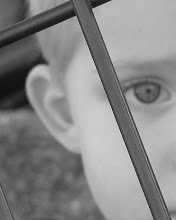That's downright scary.
Some argue that this increased rate reflects improved diagnosis, while others believe that the rates themselves have risen rapidly. Personally, I think it's a mixture of the two.
As for what causes autism, opinions are even more varied. There is a strong suggestion of genetic influence; we've seen this in our own family as we have two children with an ASD diagnosis. There are other factors such as infectious illnesses, immunizations, stress, and toxic substances which people believe can influence a child's development either prenatally or postnatally and predispose them to show signs of autism.
Many of the newest studies suggest that there are multiple pathways, dependant on different genetic patterns and risk factors.
It is obvious that there are still many unknowns in this area, and leading autism researchers are combining their resources in an effort to learn more about what causes autism and its related disorders. The NIH Autism Center of Excellence Network and Autism Speaks recently announced the launch of what is believed to be the most comprehensive study of the earliest possible causes of autism. The network is called the Early Autism Risk Longitudinal Investigation (EARLI) and it will follow 1,200 pregnant women who already have a child with autism.
The study will investigate how possible environmental risk factors influence the prenatal, neonatal, and postnatal development of children with genetic susceptibilities, as well as try to uncover the early biological indicators of autism.
I believe this is an exciting development in the search for what causes autism. Because it's only by understanding the cause that we'll ever come closer to finding a cure.



No comments:
Post a Comment